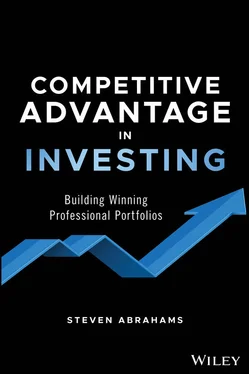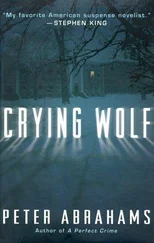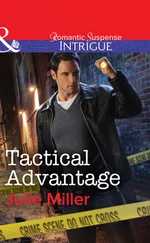The cash flow from an investment can range from stable and predictable down to the last penny to wildly uncertain. Cash flow is dynamic. It is the fingerprint of each investment.
Investors can pack concern about the future value of cash or its uncertainty into a discount rate for each cash flow and add them all up into the discounted present value of any investment. 1 That becomes the first unifying, simplifying feature of all investments: present value. Investments with short cash flows and long cash flows, safe cash flows and uncertain or risky cash flows all get summarized in one number: present value. The infinite list of investments gets reduced to an infinite list of present values. The list of present values gets sorted from highest to lowest. Now, perhaps, choosing from the infinite list looks simple. Just pick the best.
Risk Is the Mirror to Return
It may seem that investing comes down to simply choosing the investment with the highest expected return, a single investment that for every dollar going in delivers the most dollars out. It could be the stock expected to appreciate the most or pay the highest dividend. It could be the bond that pays the highest rate of interest. It could be the piece of real estate expected to bring the highest price or produce the most income. It could be gold or silver, wheat or pork bellies, or anything expected to go up in value. Investors have developed ingenious ways to project investment cash flows and then add them up or calculate a discounted present value to compare them all. Investing may seem like a winner-take-all game.
If every investor knew the exact cash flows of every investment, then a winner-take-all hunt through the investment menu would get each investor to the right place. It would create races and anoint winners. Genius would prevail. David would beat Goliath. It would make for great television, valuable tips from one investor to another. It would venerate the hunters that find winning investments.
This is the stuff that makes up most advice on investing. The daily game of covering the markets usually focuses on winners and losers, surprises and disappointments, the new new thing. It is a rich and repeatable story. But it rarely makes for good investing.
It's 1952, and Harry Markowitz, then a graduate student at the University of Chicago, makes a simple observation about the hunt for a single best and highest rate of return: it is an unrealistic way to build a portfolio (Markowitz, 1952). Almost no portfolio ever gets built that way. An exclusive focus on expected return or even on expected discounted return rules out the possibility of holding more than one security—except for the trivial case of multiple securities that all have the highest expected return. The rational investor in a winner-take-all world of returns simply would hold the best security. Any rule that led to an undiversified portfolio with one or even a handful of securities, Markowitz argues, violates both observed investor behavior and common sense. Few things in the world are certain; most are uncertain. A winner-take-all approach to investing was silly in the best case and hubris in the worst. He rejects it.
Markowitz instead focuses on uncertainty or risk. We might like to think the world follows a determined path, but it varies in small and sometimes large ways every day. It is probabilistic. One day dawns clear, another cloudy. Traffic moves quickly one afternoon, slowly the next. Technology advances and a new business replaces an old. Earnings ebb and flow. Buyers' preferences shift.
At any point, the future state of the world is unknown. Some future states may be more likely than others, of course. As the world evolves, the probabilities of some future states rise and fall. And as possible versions of the future come in and out of view, the timing, magnitude, and certainty of investment cash flows change. The cost of living might go up or down over time, the ability of a borrower to repay may change, the prospects of a company will likely vary.
Risk can shape the estimate of expected cash flow and the calculation of present value. 2 All else equal, the higher the risk, the higher the discount rate and the lower the present value of an assumed stream of cash flow. A dividend or interest payment that an investor expects with near certainty may get discounted at one interest rate. A payment at risk from earnings or default may get discounted at a higher rate. Risk can enter the calculation of present value, but that does not address Markowitz's critique.
Whether the investor adjusts the expectations of cash flow or adjusts the discounting rate, neither approach on its own suggests any obvious metric other than judgment for choosing the cash flows or the discounting rate. And once an investor choses a set of cash flows and a set of rates, discounted expected return still points to a single best and highest rate of return. The winner is anointed.
Markowitz offers a transformative idea for building a portfolio of risky cash flows, using variance to measure risk: “There is a rate at which the investor can gain expected return by taking on variance (risk),” he writes, “or reduce variance by giving up expected return” (1952, p. 79).
In other words, risk is the behavior of cash flow from the time it starts flowing into an investment to the time it finally flows out. Some investments may produce very reliable, very predictable cash flows. The cash in the drawer has a predictable cash flow. The US Treasury bond has a predictable cash flow. The safest bank deposit does, too. An investment in a start-up company may not. The history of an investment's cash flow should reflect this, and so should expected cash flow. The safest cash flows vary only a little bit and have low variance; the riskiest vary a lot and have high variance. 3
Investments with predictable prices or cash flows will tend to offer relatively low returns, and investments with unpredictable prices or cash flows will tend to offer relatively high returns. It's intuitive.
Imagine two companies: one that always pays a $1 dividend each year and another that flips a coin and pays $2 for heads and $0 for tails. Both produce, on average, $1 a year. Both have expected cash flow of $1 a year. If both investments cost the same, most investors would choose the predictable $1. That would drive up the price of the predictable $1, lowering its expected return compared to the coin-flipping investment. That was Markowitz's intuition.
The simple idea of the reliability or variance of returns makes it easier to compare investment returns, including returns on investments that might otherwise seem wildly different. Almost every investment leaves a trail of returns with an average rate of return and variability around that average. An investor can measure variability by a wide set of measures: variance or standard deviation, the ratio of winning days to losing, the largest loss, and so on. They all get at a different facet of risk. A stock or a portfolio of stocks, a bond or a portfolio of bonds, options, real estate, commodities, mutual and hedge funds, and so on all leave a record. All investments leave a trail of returns as distinct as a fingerprint.
Markowitz's emphasis on risk and return encourages investors to compare investments on these two attributes. An investor could take more risk to get more return. But an investor also could compare investments with roughly the same risk and choose the one with the highest return. An investor alternatively could compare investments with similar returns and choose the one with the lowest risk. And an investor could take a view on the future risk and future return of a menu of investments. Investing suddenly becomes an exercise in trading off risk against return.
Investors trading off risk against return should transform the relative value of different assets. For assets with roughly the same risk, the one with the highest return would attract more investment. Its price would rise relative to others and its return would fall. Returns across assets in that sleeve of risk would tend to converge. For assets with roughly the same return, the one with the lowest risk would attract investment. Relative prices and returns would start to shift.
Читать дальше












